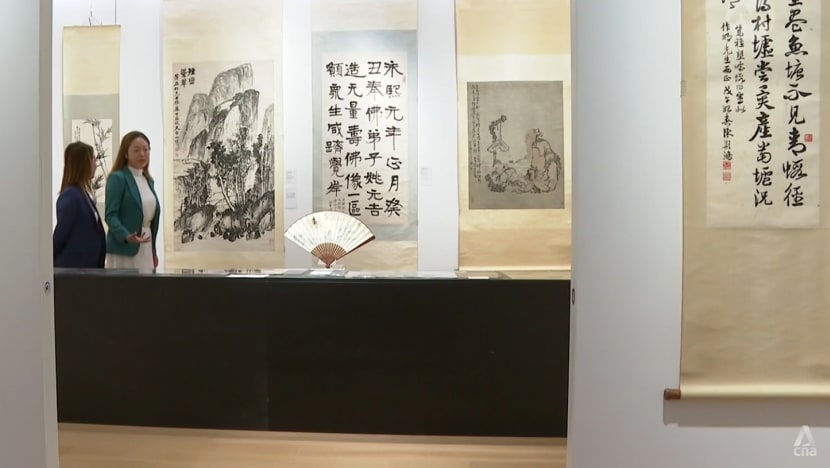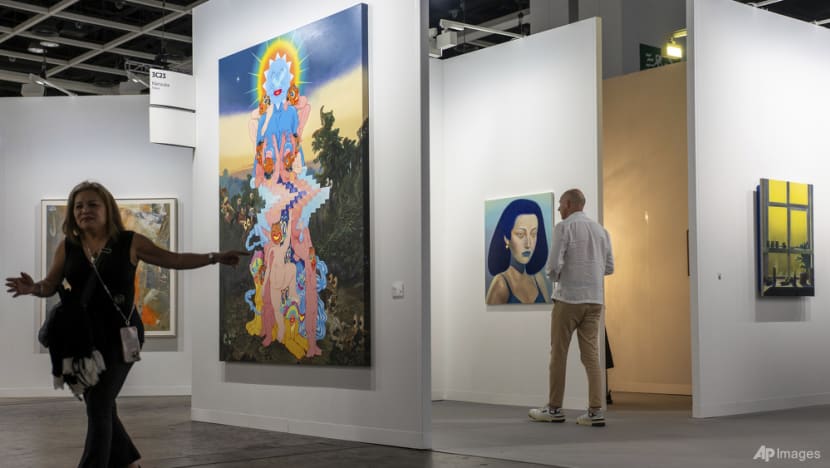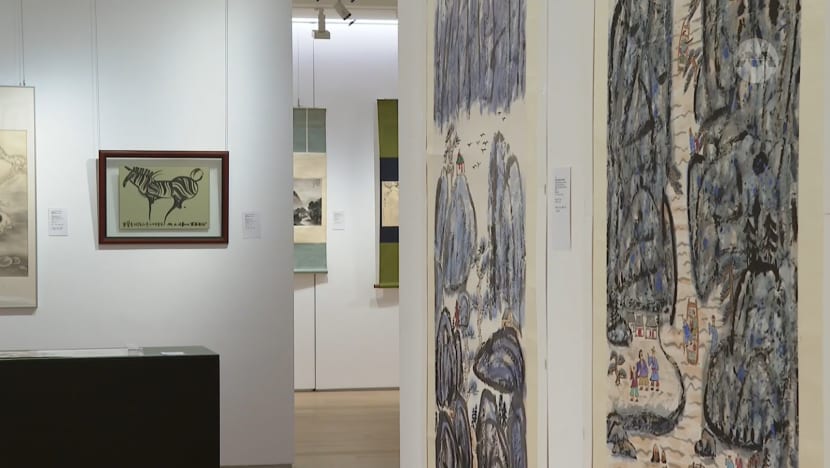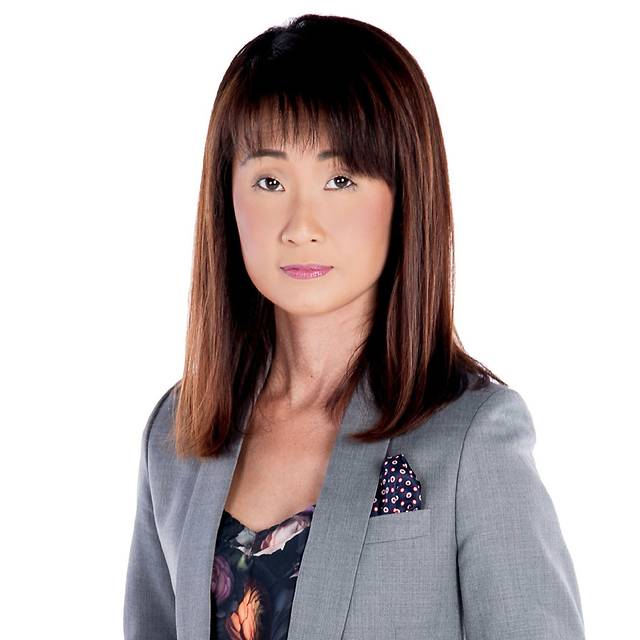Art investments gain ground in Hong Kong amid market volatility, global uncertainty
Investing in art required millions of dollars in the past but today, investors can get into the market with works priced below US$50,000.

Bonhams' art gallery space in Hong Kong.

This audio is generated by an AI tool.
HONG KONG: As Hong Kong’s stock market shows signs of recovery, a new kind of investment is catching the attention of young and high-net-worth investors alike.
Once seen as a luxury or passion purchase, art is now being included in portfolios as a legitimate asset amid market volatility, global uncertainty and the United States-China trade war.
The global market share of Hong Kong and mainland China’s modern and contemporary art doubled from 7 per cent in 2015 to 14 per cent last year, according to a report released by China Art Market in March.
Julia Hu, managing director for Asia at international auction house Bonhams, told CNA that investor attitudes towards art have evolved significantly in the past decade.
“When I talked to some collectors’ family offices in Hong Kong, maybe 10 years ago, no one considered putting this (in their) portfolio – maybe just (as) a collector because of their personal interest,” she said.
“Now, the family offices, when they set up their portfolio assets … some want to put 10 per cent of their portfolio into art, because of the very special characteristic of art,” she noted, adding that the art market is “resilient” especially during volatile times.
MORE YOUNG COLLECTORS
Some experts believe that as art becomes more affordable and accessible, investors may increasingly turn to it as a financial asset.
While investing in art required millions of dollars in the past, investors can get into the market today with works priced below US$50,000.
Global art sales fell 12 per cent in 2024, marking the second yearly drop since 2022 – but smaller dealers with a turnover under US$250,000 grew 17 per cent, according to Dublin-based consultancy Arts Economics.
Auctions under US$5,000 also rose, showing resilience at the lower end of the market despite weakness at the top. Some works start as low as US$1,500.
“We are seeing an emergence of a new segment of customers coming into the market, which are the Gen Zs, the millennials, which is very exciting. They are actually propping up what we call the accessible art pieces … that are about US$50,000,” said Simon Tye, CEO of Hong Kong-based consumer insights firm MDRi.
“This is contributing to a lot of the growth that we are seeing,” he added.
Almost 40 per cent of bidders and buyers in Asia now are aged under 44, stated the China Art Market report.
Digital art and AI-generated works are also gaining traction among Gen Z and millennials.
Tye said young savvy investors constantly have an urge to try new things and are more open to experimenting, compared with the previous generation.
ATTRACTIVE OPTION IN VOLATILE TIMES
Art's low correlation with conventional investments such as stocks and bonds has made it an attractive option when market conditions are unstable.
Tye noted that even as investor confidence globally has been dented by a turbulent economic landscape, interest still remains among investors in the art market.
“When we look at the (art auction market) volume, the volume is not dropping as significantly as we thought it might be,” he added.
“The value might be coming down primarily because the top end of the market is not selling as well. But the bottom end of the market is actually emerging and emerging very, very strongly.”
While Hong Kong’s Hang Seng Index gained 18 per cent in 2024 and continued rallying into mid-2025, it remains well below its pre-COVID-19 pandemic peak.
“Some people treat (art) as an alternative investment … because it is less sensitive to inflation period, less sensitive to current fluctuations like those other paper assets,” said Dunhong Jin, assistant professor at the University of Hong Kong Business School.

Investors are also increasingly seeing Hong Kong as an art auction hub. Reports have cited the Chinese special administrative region as the third largest art market in the world behind New York and London.
Similar to how the IPO market is soaring in the city as corporations shift away from US listings largely due to ongoing trade tensions, investors, too, are turning to Hong Kong for Chinese assets.
Hong Kong can “expect a sustained interest in Chinese art” from local investors, Jin added.
“And then through this strategic location, we can actually connect high-net-worth individuals in mainland China to the rest of the world.”
Hu from Bonhams called the art market an “interesting alternative investment vehicle” for investors and collectors, noting that art pieces are unique and can be used as a “diversification tool to hedge against the economy”.
While there is a lot of uncertainty over how real estate - a popular sector for investors - will perform in an uncertain economic environment, Hu said she believes art is less exposed.

Art also has an emotional factor and gives collectors who get their hands on masterpieces a certain social status, differentiating it from the standard financial product, Hu added.
One example she cited was a contemporary piece by the late Japanese artist Tetsuya Ishida. The acrylic on panel piece, titled The Men on a Belt Conveyor, sold at auction in December last year for about HKS$10 million (US$1.28 million) - a 25 per cent rise from Ishida’s previous auction record, despite economic uncertainties.
“The reason is he's a very talented artist. Everybody knows him and his reputation is very respected in the market,” Hu said.
“Secondly, he (did) not paint many paintings and he has already passed away. So this painting has been perceived as a masterpiece - a very rare, large signature piece from this artist.”
Members of the public whom CNA spoke to echoed these sentiments.
“I feel that more may turn to investing in art because art has its historical and creative value. Regardless of time, art may be a better store of value than equities,” said 28-year-old Song Xue Jie.
Yang Jing Rui, also 28, noted that US-China ties – which have frayed in recent years due to a trade war – have affected the international economic environment.
“The global relations now are quite unstable … For ordinary young investors, choosing to invest in equities may be very risky,” she added.
“Investing in the art market may yield longer term stability and benefits with possibly better returns.”
NOT WITHOUT RISKS
Despite this, experts said the art auction market is not without risks.
Jin warned of strategic or speculative behaviours in the market that could lead to prices of art pieces deviating from their intrinsic value. This could deter people from entering the market, she said.
As a financial hub, Hong Kong should maintain a variety of art pieces in the market that will appeal to both Chinese and international investors, Jin added.
“We want people to know that Hong Kong or China is a big market for Chinese art … And at the same time, we also offer alternative choices for people interested in Western or contemporary arts,” she said.
“Otherwise, if we only focus on one side, (it) may actually make the Hong Kong market less attractive or less balanced in terms of the offerings.”



















